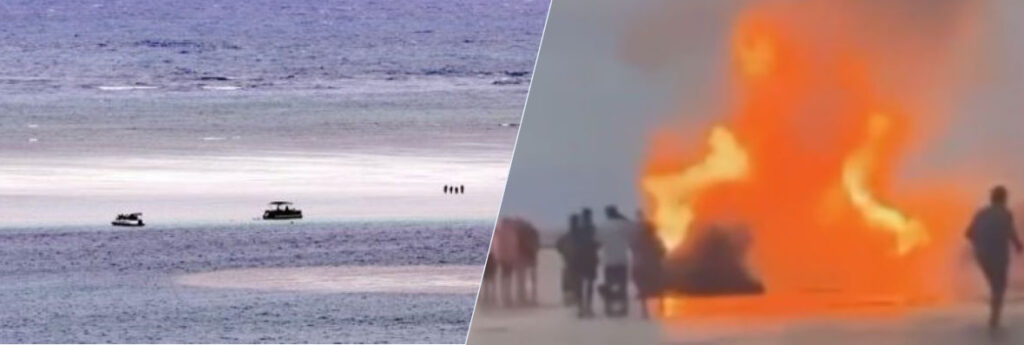Hawaii’s public lands agency is warning people that they face arrest if found burning Christmas trees at an oceanic sandbar that is a popular gathering place for local boaters and tourists.
The tradition of piling up Christmas trees for bonfires on the sandbar, which rests between the open Pacific Ocean and Kaneohe Bay on Oahu’s windward side, is harming the environment, Department of Land and Natural Resources officials said in a statement Tuesday.
“People haul their trees to (the site) by boat (but) burning them is detrimental to the sandbar and the surrounding marine ecosystem,” Hawaii’s environmental law enforcement chief, said Jason Redulla.
But it can be hard to track down those responsible, he noted.
The state receives tips about tree burnings every year and dispatches crews to He‘eia Kea Small Boat Harbor, the point of departure for boats heading to the sandbar, Redulla said, adding, “Unfortunately, we can’t always identify the individuals involved in these illegal and disrespectful activities.”
The slim stretch of reef and sand near a military installation is entirely surrounded by deeper ocean water. It offers views of Oahu’s small offshore islands and a mountain range that rises from the coastline.
Leialoha “Rocky” Kaluhiwa, president of the Ko`olaupoko Hawaiian Civic Club, said the site is sacred to many Native Hawaiians, who call the sandbar Ahu O Laka.
“The iwi (remains) of Chief Laka of Maui were brought by his sons and buried there centuries ago,” Kaluhiwa said in the statement. “Once iwi is buried in an area, it is consecrated and considered ‘kapu,’ or sacred to Native Hawaiians.”
Kaluhiwa said Chief Laka is an ancestor to some Native families who live near Kaneohe Bay and added, “We strongly discourage anyone from taking their ‘opala (discarded items like Christmas trees) to light bonfires on Ahu o Laka.”
Burning trash in public or in backyards is illegal in Hawaii.

